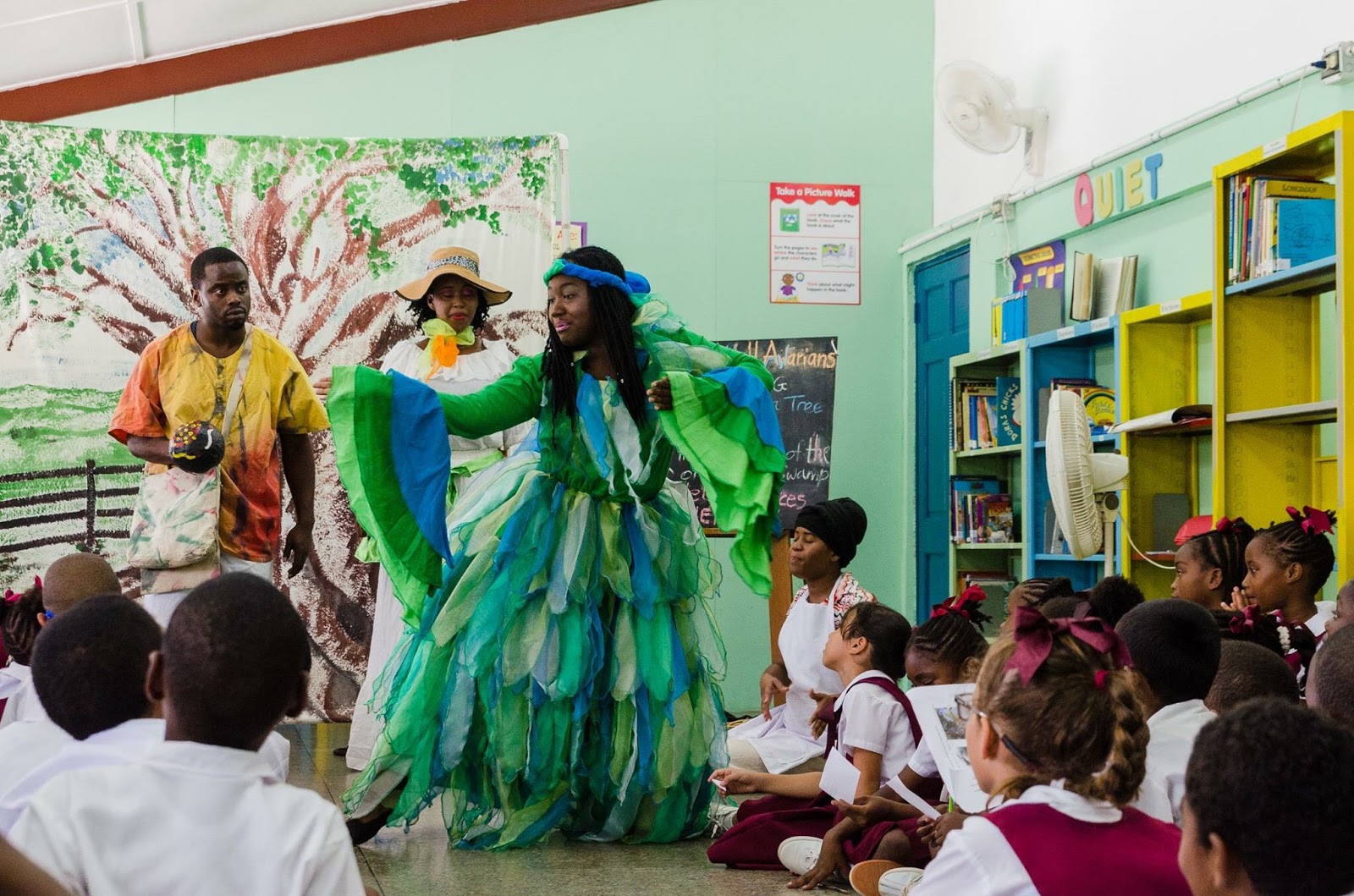Arts-in-Action’s involvement with environmental projects located within primary schools has made the organisation aware of the challenges and potential that school communities hold for work in environmental advocacy.
The simultaneous occurrence of flash flooding in Port of Spain, and communities along the East/West corridor, and the rapid rate of urbanization, have not produced requisite attention and cautionary measures. According to the global issues website, a healthy biodiversity concerns us with “Protection of water resources; Soils formation and protection… Pollution breakdown and absorption; Recovery from unpredictable events…” to “Food… Future resources…Recreation and tourism… [and] Cultural values”. Our environmental challenges situate us within these discussions, giving rise to the subsequent question; what other biodiversity challenges have emerged as a result and how do we intervene?

Our education system provides some level of prescription, as it embraces the importance of multiple intelligences and constructivist learning; the fact that our children have various literacies and learn differently, and that learners “construct meaning” as they learn. This presents us with the opportunity to make the notion of “biodiversity” itself matter beyond those directly involved in the sciences through applied creative arts strategies and field trips.
Arts-in-Action’s collaboration with the Cropper Foundation during the January and February 2015 Carnival season, allowed us the opportunity to see these principles at work with young people and teachers alike. Their participation in the research, design and construction of mas portrayals that raised awareness about biodiversity and environmental issues, presented us with a way to use a constructivist learning framework through cultural practice and tradition. The vestiges of cultural and religious practices of First People’s, traditional African and Indian folklore, all point to this. These are made manifest in Karina Paiman Cristo Adonis’ study of herbs, the Hindu Ganga Dhara (water festival), the Orisha Oshun (river) Festival, and the Christian Corpus Christi tradition of planting on that day. Creating a process that liberates these traditional knowledges and the inherent cultural values, helping shift development paradigms from archaic notions of progress to sustainable development practices and advocates for such, were of critical concern to this project.
CLEAN 2015
CLEAN 2015 involved Arts-in-Action’s collaboration with Caribbean Yard Campus (CYC), whose mandate is to network traditional knowledge spaces and to validate this knowledge as integral to Caribbean education and development.
CLEAN 2015 sought to increase the awareness and understanding of biodiversity among primary school students by 2020, through participatory arts based strategies and festival education, which privilege the traditional knowledge of local communities. To this end the project was situated in 8 primary schools between Port of Spain and Sangre Grande, engaging students and teachers in participatory arts education, festival education, and the implementation of their own arts based, biodiversity projects.
CLEAN 2015 also trained 32 teachers in introductory drama-in-education strategies to be used in shaping environmental lessons. The teachers were also exposed to introductory training in videography for the purposes of documenting and promoting lessons in biodiversity to the wider public. In addition, 400 students were exposed to 8 theatre-in-education workshops on biodiversity, one festival education field trip, and 8 school-workshops by facilitators from traditional communities, culminating in the planting of 80 new trees across the 8 schools; all geared towards increasing awareness about culture and its relationship to biodiversity.
Prepared by Marvin George (former Artistic Director)

